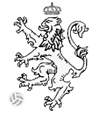
Document | arfsh.com
A document created by arfsh.com for the whole football community
Fritz Baar, 06/05/1931
Author: Isaque Argolo | Creation Date: 2024-04-14 01:13:06
Data providers: Isaque Argolo.
Archive(s): .
THE BEST FOOTBALLERS IN THE EUROPEAN CUP — Fritz Baar | 06/05/1931 — The national teams of Italy, Austria, Hungary, Czechoslovakia and Switzerland take part in the European Cup competition. With the exception of the Swiss team, I saw all teams at work in the competition, so it's worth making comparisons. I admired the most imaginative, fluid and effective forward play from the Italians. With the exception of the right winger Banchero, who played as an expert for Cesarini, the Italian attack that played against Austria in Milan consisted of excellent footballers. The strongest of them was the inside left Ferrari, but in my opinion he can only be considered as a builder and not as a shooter. Ferrari is slow and not powerful. The most important advantage of the Italian attack is the centre-forward Meazza, who takes every opportunity to rush towards the goal and takes the shortest route and seemingly the easiest way to get into a shooting position. The two wingers are also valuable forces. The small Argentinian Orsi practices the same style of play from the wing as Meazza in the center, and Constantino is a fundamental right winger who, like Siegl, plays significantly faster. What I admired most was the body control of the Italian forward. Only Banchero, who acted more as a battering ram, couldn't keep up. The forward lines of Austria, Hungary and Czechoslovakia had some excellent individuals, but they were equally bad in ensemble play. My classification of the forwards would result in the following picture: Right wingers: 1. Táncos (Ferencváros — Hungary), 2. Constantino (Roma — Italy), 3. Junek (Slavia — Czechoslovakia), 4. Siegl (Admira — Austria). Right inside forwards: 1. Svoboda (Slavia — Czechoslovakia), 2. Nausch (Austria — Austria), 3. Banchero (Genoa — Italy), 4. Barátky (Hungária — Hungary). Centre-forwards: 1. Meazza (Ambrosiana — Italy), 2. Gschweidl (Vienna — Austria), 3. Turay (Ferencváros — Hungary), 4. Kannhäuser (DFC Prag — Czechoslovalia). Left inside forwards: 1. Silný (Sparta — Czechoslovakia), 2. Kalmár (Hungária — Hungary), 3. Ferrari (Juventus — Italy), 4. Tögl (Vienna — Austria). Left wingers: 1. Horvath (Wacker, Austria), 2. Orsi (Juventus — Italy), 3. Titkos (Hungária — Hungary), 4. Hejma (Sparta — Czechoslovakia). Although the forwards are rated as individual players here, if you add up the grades you also get a picture of the attacking lines: Italy (11), Austria (13), Hungary (13), Czechoslovakia (13). Austria put together the strongest half-back line in the game against Czechoslovakia. Below is the classification of each half-back: Right half-backs: 1. Pitto (Bologna — Italy), 2. Mock (Austria — Austria), 3. Lyka (Ferencváros — Hungary), 4. Vodička (Slavia — Czechoslovakia). Centre half-backs: 1. Hofmann (Vienna — Austria), 2. Ferraris (Roma — Italy), 3. Kléber (Hungária — Hungary), 4. Šimperský (Slavia — Czechoslovakia). Left half-backs: 1. Gall (Austria — Austria), 2. Tyrpekl (Bohemians, Czechoslovakia), 3. Bertolini (Alessandria — Italy), 4. Korányi (Ferencváros — Hungary). Adding the grades results in the following classification of the half-back series: Austria (4), Italy (6), Hungary (10), Czechoslovakia (10). Now the rating of the defenses: Right defenders: 1. Schramseis (Rapid — Austria), 2. Dudás (Újpest — Hungary), 3. Ženíšek (Slavia — Czechoslovakia), 4. Monzeglio (Bologna — Italy). Left defenders: 1. Blum (Vienna — Austria), 2. Mándi (Hungária — Hungary), 3. Caligaris (Juventus — Italy), 4. Kučera (Bohemians — Czechoslovakia). Goalkeepers: 1. Hiden (WAC — Austria), 2. Plánička (Slavia — Czechoslovakia), 3. Gallina (Nemzeti — Hungary), 4. Combi (Juventus — Italy). Overall defense rankings: Austria (3), Hungary (8), Czechoslovakia (9), Italy (11). The classifications of the national teams produce the following result: Austria (20), Italy (28), Hungary (31), Czechoslovakia (32). Austria's rating was so good because I took into account the best players from three teams from this country and their best performances, while I only saw the other national teams once. I gave Hiden a rating of 1 because he offered an unrivaled performance in Milan. The same applies to Schramseis. In contrast, Avar and Borsányi were missing from the Hungarians and Cesarini from the Italians. If they had played, their teams' classification would probably have been more favorable. Austria's rating can therefore be described as unreal. However, from the classification one can see that Italy can be seen as Austria's strongest opponent.
© arfsh.com & Isaque Argolo 2024. All Rights Reserved.